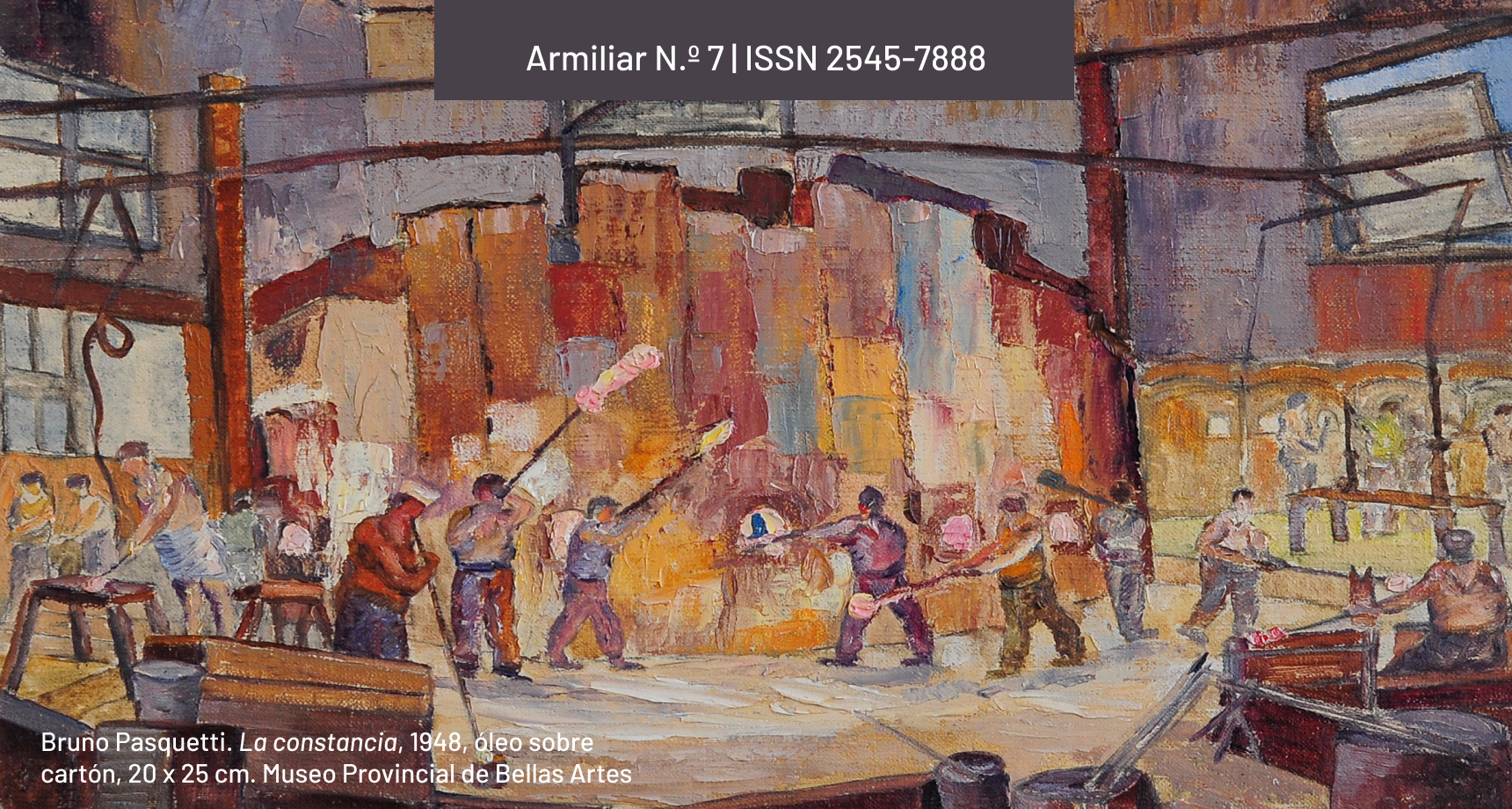Baroque paintwork and mystic writing
Francisca Josefa, a Clare woman from New Granada
DOI:
https://doi.org/10.24215/25457888e049Keywords:
Baroque art, Aesthetic, Mystic literature, Professed woman, New GranadaAbstract
This present article exposes some features of the European baroque aesthetic and so of the New Kingdom of Granada during the Seventieth Century and the beginnings of the Eighteenth Century. Through these features, there are shown the devotional ambiances that favor the sacralization of daily life in this society. Emphasizing pictorial resources used by art-makers from the Province of Tunja in the New Kingdom, visual images are described which took part in the environment in which lived Sister Francisca Josefa de la Concepción, a professed woman and mystic writer originative of this Province.Downloads
References
Borja, J. (2002). Cuerpos y vidas y ejemplares: la teatralidad de la autobiografía. Fronteras de la Historia. (7), 99-115.
Borja, J. (2012). Pintura y cultura barroca en la Nueva Granada. Los discursos, sobre el cuepo. Fundación Gilberto Alzate Avendaño.
Brizuela, S. (2019). Para reparo de tanta doncella. El origen de la vida conventual femenina en Tunja (1571-1636). Theologica Xaveriana. (69), 1-28.
De Castillo, F. J. (1956a). Afectos espirituales. ABC.
De Castillo de, F. J. (1956b). Su vida. Escrita por ella misma. ABC.
Echeverría, B. (2017). La modernidad de lo barroco. Era.
Latre, M. (1847). El Sacrosanto y Ecuménico Concilio de Trento. Sumario de la historia del Concilio de Trento. Imprenta de D. Ramón Martin Indár.
Loyola, I. (1952). Excercicos espirituales en Obras completa. Católica.
Maravall, A. (2012). La cultura del Barroco. Análisis de una estructura histórica. Ariel.
Montero A., Borja, J., Borja, J., Montero, J., Álvarez, M., Castañeda, S. (2016). Muerte barroca. Retratos de monjas coronadas. Banco de la República.
Niño, Sor. (1993). Flor de Santidad. La Madre Castillo. Academia Boyacense de Historia.
Pastor, M. (2014). Cuerpos sociales, cuerpos sacrificiales. Fondo de Cultura Económica.
Robledo, A. (1987). La escritura mística de la madre Castillo y el amor cortesano: religiones de amor. Thesaurus. Boletín del Instituto Caro y Cuervo. 42 (2): 379-388, http://biblioteca.udea.edu.co:8080/leo/handle/123456789/1678
Sebastián, S. (2007). El barroco iberoamericano. Encuentro.
Vargas, L. (2017). Pintores en el esplendor de Tunja: nombres de artífices para salir del anonimato (siglos XVI y XVII). Historia Y MEMORIA. (15): 49-72.
Downloads
Published
How to Cite
Issue
Section
License

This work is licensed under a Creative Commons Attribution-NonCommercial-ShareAlike 4.0 International License.
Current policy since 2019
The acceptance of the manuscript by the magazine means the non-exclusive cession of the property rights of the authors in favour of the editor, who allows the reuse, after publication (post print), under a license Attribution-NonCommercial-ShareAlikes 4.0 International (BY-NC-SA 4.0).
According to these terms, the material can be copied and redistributed by any means or in any format as long as a) the author and original source of the publication are quoted (magazine and URL of the work), access to the license is provided and whether changes have been made is mentioned; and b) the material is not used for commercial purposes.
The cession of non-exclusive rights means that after the publication (post print) in Armiliar the authors can publish their work in any language, means and format; in such cases it must be mentioned that the material was originally published in this magazine. Such cession also means the authorization of the authors for the work to be collected by SEDICI, the institutional archive of the Universidad Nacional de La Plata, and to be spread in the databases that the editorial team considers appropriate to increase the visibility of the publication and its authors.
Moreover, the magazine encourages the authors to deposit their productions in other institutional and thematic archives under the principle that offering the society the scientific and academic production without any restrictions contributes to a greater exchange of the global knowledge.



























